Last updated on January 23rd, 2023
Mykonos may be alluring, Ibiza tantalizing, and St Tropez may have the ultimate swagger, but the Algarve in Portugal is my port of call for dreamy, charming and authentic. And the light: at sunrise, it’s luminescent with shades of cotton candy and bluebells; at sunset, it dissolves listlessly into a canvas of tangerine and ink. Here is my guide to the Algarve and some of the best things to do when you visit this sunny European outpost.
A Guide to the Algarve

I may not be a creature of habit, but when it comes to July and August, all roads seem to lead to the Algarve. I’ve been coming here for fifteen summers. My husband, Mark, and I loved it so much, we started developing properties here. It’s a mere two and half hours from London, summer perfection is guaranteed (it averages 300 days of sunshine a year), and it truly has the most spectacular beaches in Europe. This is a canvas of whitewashed towns and villages, scented orange groves, rugged, russet coastline and biscuit-coloured sands.
Under the Algarvian Sun

Quinta do Lago, my sunny perch for fifteen years, is a 2000-acre resort within the picturesque Ria Formosa reserve, a network of beaches, marshland, canals and islands that extends 60 km along the Algarvian coast. Quinta do Lago is located within ‘The Golden Triangle’ which is renowned for its wonderful golf courses (I won’t bore you with these in my Diary as I know nothing about golf), beautiful coastline and outstanding cuisine. The Ria Formosa National Park is famed for its beauty and rare species of birds and the many lakes surrounding it. The area is protected, so you won’t see any beach construction of any kind other than the odd wooden clapboard restaurant dotted here and there.
Algarve Beaches

Sunrise on the Ancão Beach where Sahara walks me
The Algarve has 200km of drop dead gorgeous undulating beaches, coves and cliffs, many of which have the coveted Blue Flag eco-label. It’s the Atlantic here, but there’s a Mediterranean feel with echoes of The Hamptons.
I wake up at 6am every morning, and wander over to my favourite beach at Ancão with Sahara, my Rhodesian Ridgeback. This picture-perfect, wild and tantalizing beach lies between Quinta do Lago and Vale do Lobo, is bordered by sand dunes on one end and further down, leads to Gigi’s, a restaurant accessible only by beach or via the Quinta do Lago wooden bridge (and a favourite of Caroline of Monaco’s).

The Quinta do Lago bridge
I’m not supposed to walk Sahara on this beach during high season, but I do anyway, and so do local dog owners. You have to be off the beach by 7.30, or the beach police on quad will come looking for you (I have been known to scurry to the dunes and hide with my friend Sarah on more than one occasion).

Umbrella pines provide a sheltering sky
There’s an additional 200km of exquisite beaches to explore, such as Meia Praia (with Lagos to the east, and Sagres and Praia da Rocha to the west), and Praia do Amado, the main surfing beach.

If it’s gay and nudist you’re after, then head over to Trafal beach, framed by dunes and pine trees. You might need to avert your eyes though to some bad behaviour!

The tangerine sunsets are perfect for sundowners
Top tips when you visit the Algarve
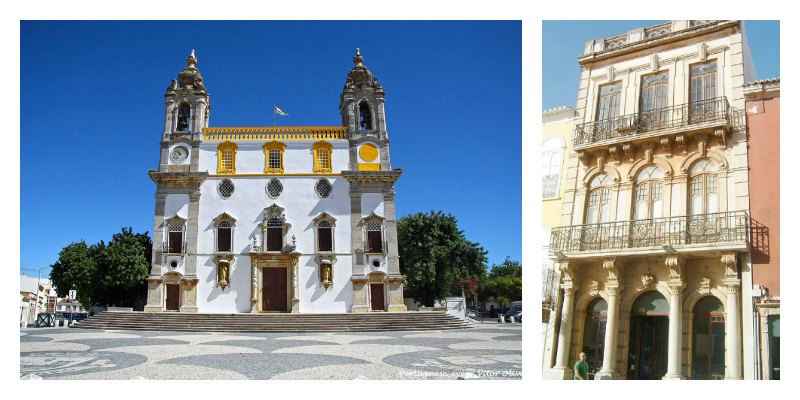
Walk around the Cidade Velha (Old City) in Faro, check out the Igreja de Nossa Senhora do Carmo, and have a Sagres beer in Café Aliança.

Spend a beach day with locals at Ilha do Farol and then head to MarAmais bar and restaurant for fresh juices and caipirinhas. You’ll feel like Robinson Crusoe who hit the jackpot and found paradise on earth.
 Eat Mozambique prawns at Malveiro’s restaurant and sip on wine in cyclopean glasses (my beautiful friend Jack deLashmet seen tucking with gusto into his). My husband Mark eats here so often he has his own personalised bib! Make sure you tell Lionel that Mark and Scarlett sent you. Malveiro
Eat Mozambique prawns at Malveiro’s restaurant and sip on wine in cyclopean glasses (my beautiful friend Jack deLashmet seen tucking with gusto into his). My husband Mark eats here so often he has his own personalised bib! Make sure you tell Lionel that Mark and Scarlett sent you. Malveiro
 Take a sky tour of Faro and the islands by helicopter with HTA (who also moonlight as firefighters). HTA
Take a sky tour of Faro and the islands by helicopter with HTA (who also moonlight as firefighters). HTA
 Visit the 18th century São Lourenço church in Almancil. Inside, it’s a wonder room of azulejo tiles and 17th and 18th century statues.
Visit the 18th century São Lourenço church in Almancil. Inside, it’s a wonder room of azulejo tiles and 17th and 18th century statues.

Go for a sunset and moonlight horse ride along the Ria Formosa lagoons in Bev’s capable hands. Pinetrees
 Tuck into a cataplana at O Jacinto in Quarteira. The restaurant has its own boat and you only get catch of the morning on your plate. If they have these in, try their fresh prawns: you’ll never taste a sweeter, juicier dish.
Tuck into a cataplana at O Jacinto in Quarteira. The restaurant has its own boat and you only get catch of the morning on your plate. If they have these in, try their fresh prawns: you’ll never taste a sweeter, juicier dish.
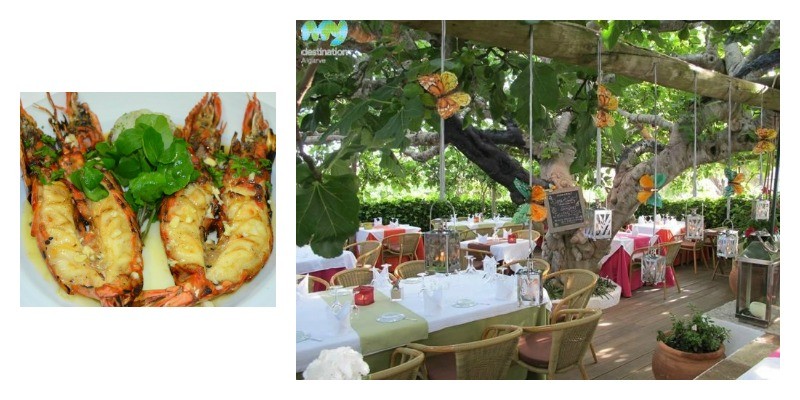
Sit under a 100 year-old fig tree and eat home-grown produce at Casa do Campo. My favourite is the warm goat’s cheese tartlet with honey and dried figs (of course), and the lobster ravioli with creamy vermouth and passion fruit is sensational. Casa do Campo
 Rent a quad and drive around the Ria Formosa. My daughters are pros with these beasts, but watch out: it’s easy to lose control!
Rent a quad and drive around the Ria Formosa. My daughters are pros with these beasts, but watch out: it’s easy to lose control!

Image: Conrad Algarve
Go to the Conrad Algarve for a “Relax and Put up your Feet” foot treatment, luxuriate in the indoor and outdoor infinity pools and finish with an aromatic steam. The Conrad is a great stopover for afternoon tea, and if you want a fancy pants dinner, try Heinz Beck’s Gusto restaurant. There’s even a cigar menu for afters (I have been known to love an after-dinner cigar, but gave these up when one a day swiftly led to four!) Conrad
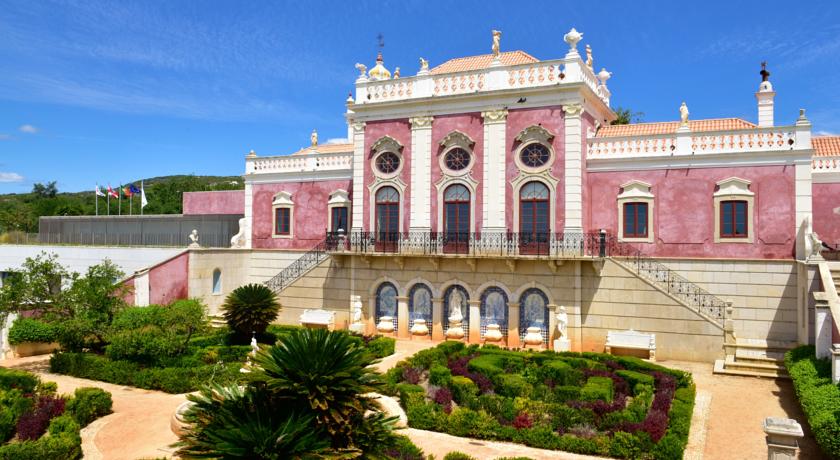
Image: Palacio do Estoi
Go for lunch in a Rococo Pousada with gardens inspired by the Château de Versailles. This dusky pink gem was built in the 18th century, and is now a luxury hotel and spa. It’s stuffed full of antiques and has some eye-popping plasterwork. Palacio Estoi

Image: Porshes Pottery
For the prettiest plates, mugs and tiles, head to Porches Pottery. It’s been in the crafting business since 1968, and you can grab a crisp glass of rosé after you watch the artisans hard at work. My mother-in-law bought a large supply for her new home fifteen years ago, and it’s still just as beautiful as the day she brought half the shop home. Porches Pottery
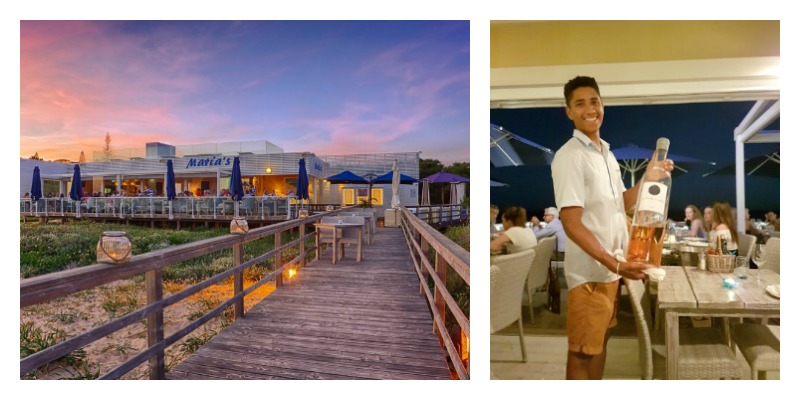
Go for a Sunday lunchtime boogie at Maria’s. It’s hard to get a table, so book well in advance. Miguel, the owner, is quite the party animal so you’ll see him hit the dance floor with his friendly staff. Try the clams bolhão pato (an Algarvian speciality) and the monkfish kebab. Maria’s Rocky Road is famous so keep some room for dessert! Maria’s
Portugal on a Plate
What a Tart!
Natas are now available all over Europe, but when I first started going to Portugal, no one outside of the country had ever heard of these delectable custard-filled delicacies. My favourite shop is Pastéis de Belém next to Lisbon, but you can find natas stocked in all Algarvian cafés and supermarkets. They are also incredibly easy to make at home. Team these up with a bica, a short espresso, or a pingado, an espresso with a small shot of milk, and you’ll see why I can never eat just one! Speaking of coffee, the Portuguese are obsessed, and it’s even better, dare I say, than the coffee in France.

Piri Piri
Piri Piri, the African bird’s eye chilli introduced to Goa by the Portuguese, is also name for the famous Portuguese hot sauce, adored by chili fans and addicts alike. Most Portuguese restaurants have their in-house version of piri piri, and I have coaxed many a manager to let me take a goody-bottle home.

Left: Piri Piri Stall (Flikr – Mark van der Velden)
As a chilli addict I have tried hundreds of piri piri sauces and oils from around the world, but it’s the one from Calvé which always gets first prize. It’s racy and fiery, and as a good piri piri oil should, it kindles the taste buds first, flickers and singes as it hits the back of the mouth, and then leaves you begging for more.
Vindaloo
You may think the Vindaloo dish is British or even Indian, but it originated in Portugal as carne da vinha d’alhos. Portuguese colonisers who arrived in Goa by ship would preserve meat in wooden barrels in a marinade of garlic and vinegar. It was then popularised by the locals and the name morphed into vindaloo. The British version of this dish, the staple of many a student after a Friday night pub crawl, is hot enough to take your socks off (and have you tried the even spicier Tindaloo?)
The Big Cheese
 Forget brie and camembert, and check out the yummiest, creamiest, gooiest cheese I know: the Queijo do Azeitão DOP. This artisanal sheep’s milk cheese uses cardoon thistle extract as a rennet, so it’s perfect for vegetarians. Like a good brie, this cheese likes to keep its audience waiting: remove it from the fridge for at least 4 to 6 hours, slice off the rind top, and using a spoon, dribble it like honey onto your baguette or cracker. It’s even better when you add a few drops of piri piri oil!
Forget brie and camembert, and check out the yummiest, creamiest, gooiest cheese I know: the Queijo do Azeitão DOP. This artisanal sheep’s milk cheese uses cardoon thistle extract as a rennet, so it’s perfect for vegetarians. Like a good brie, this cheese likes to keep its audience waiting: remove it from the fridge for at least 4 to 6 hours, slice off the rind top, and using a spoon, dribble it like honey onto your baguette or cracker. It’s even better when you add a few drops of piri piri oil!
Tea and Quince
Charles II’s Portuguese wife, Catherine of Braganza, didn’t just bring a fancy dowry with her to England: she also popularised the hot brew we know now know as “a cuppa,” which swiftly became all the rage at court and throughout the country. Catherine also imported mermelo, or quince jam, to English court: this soon morphed into marmalade and the quince was replaced with orange peel. I’m sure Paddington Bear would be her biggest fan.

Catherine of Braganza, Charles II’s wife, popularised tea and marmalade (English Heritage, Kenwood House) “Thank goodness,” I hear Paddington say!
The Spy who Loved Estoril
A certain British spy, who loves his women and a martini shaken, was conceived in the Palacio Hotel in Estoril. Commander Fleming was posted here during World War II, the hotel acting as a central nervous system for British and German spies in a country which was neutral during the war. Next door to the hotel is Casino Estoril, the inspiration for the first Bond novel, Casino Royale.

Palacio Hotel in Estoril, the birthplace of Commander Bond and his martinis.
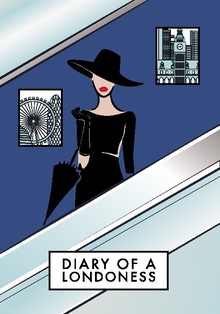


12 Comments
Anna
September 3, 2016 at 5:28 pmAmazing edition, so poetic, so beautiful, should appear in some delightful madness that I’ll bet is blooming right now in that mind of yours
DiaryofaLondoness
September 3, 2016 at 5:32 pmThank you Anna dear ??
Miriam - londonkitchendiaries.com
August 18, 2016 at 5:11 pmBeautiful pictures of the Algarve! I can see why you return year after year. Watching the sunrise on Ancao beach must be magical!
DiaryofaLondoness
August 19, 2016 at 5:57 amThank you Miriam! It is a magical part of the world.
Michele
August 17, 2016 at 11:10 pmOh what a place, so lovely.
I would guess a cell phone tower.
Thank you, Chele
DiaryofaLondoness
August 18, 2016 at 4:40 amYes Chele!
DiaryofaLondoness
August 18, 2016 at 11:27 amThanks Chrissie!
Elli Bayer
August 12, 2016 at 8:08 pmHi Scarlett,
I always love your blog. We are going to be in Portugal beginning August 18th..and so this article game at a perfect time.
Where are you and Mark and family spending the summer? We have been in Sagg and spent some time with Dennis Andersen..I do not know if you remember him. He was a close friend to John. It is difficult to realize that John is no longer with us..His persona is with us every day..And his gardens surround us..
Please keep the blogs coming I enjoy them so much and they always make me smile and reminisce.
love,
elli
Jarod Smith
August 13, 2016 at 12:05 pmMakes me want to go! Oh hang on, I already live here!! Lovely notice onPortugal…seriously, you should start peddling some of your blog to newspapers…I’ve yet to read a piece on Portugal as sonorific as this xx
Elli—you’re gonna be in Portugal! Don’t suppose I’ll see you will I?
eleanorbayer
August 13, 2016 at 5:17 pmJarod….you are one of my favorite persons of all times..
Thank you for connecting us all…
Amore and abracos.
elli
DiaryofaLondoness
August 14, 2016 at 11:49 amThanks Jarody! x
DiaryofaLondoness
August 14, 2016 at 11:48 amThanks for your lovely support Elli. We just came back from Portugal and heading off to Eire on Tuesday, where we will think of you and Ron. We miss Jacky terribly. As you say, he surrounds as always. I remember Dennis well with his beautiful Castle and Rhodesians.
Will you be travelling to the Algarve? If so, do let me know when. Not sure when Mark will be there but Jarod is, and I know they would both like to see you. Much love, happy travels! xx